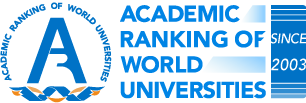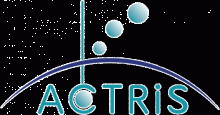Picnic Science in Polonia: "Cambiamo il clima"
CNR-ISAC invitato speciale alla 24a edizione del Picnic Science in Polonia: "Cambiamo il clima"
CNR-ISAC invitato speciale alla 24a edizione del Picnic Science in Polonia: "Cambiamo il clima"
La Notte Europea dei Ricercatori tornerà anche quest'anno nelle città italiane ed europee grazie a 42 progetti finanziati dalla Commissione Europea.
27 Novembre 2020, questa è la nuova data fornita dalla CE per permettere ai partners dei progetti finanziati di avere 2 mesi in più per affrontare il post emergenza e proporre nuovi modi per parlare di scienza e fare festa insieme, per avvicinare tutti i cittadini a questo magnifico mondo.
Il CNR-ISAC parteciperà nelle sedi territoriali ai seguenti progetti:

Documentation and conservation of Underwater Cultural Heritage (UCH) is crucial to preserve humankind’s history and traditions, safeguarding tangible testimonies of past human life while ensuring its accessibility to present and future generations. TECTONIC project will promote an intersectoral collaboration between academic and non-academic
professionals (such as technical experts, archaeologists, conservator, geologists, engineers, computer scientists) working in different topics related to the UCHs to respond and find solutions to the complex issues still existing in the field of UCH. The overall aim is the exchange of skills and expertise, the training activities for the implementation, improvement and assessment of innovative materials, techniques, tools and methodologies to develop solutions and marketable products for the conservation, restoration and management of the UCH (objects, artefacts, structures, remains etc.). To achieve its overall aim, TECTONIC project will undertake innovation and development activities driven by the following objectives:
All the objectives will be devoted to stimulate new ideas that would bring to the development of new marketable products by capitalizing on the research results that will be achieved in the project, creating a link between business, research and higher education.
Call: H2020-MSCA-RISE-2019

Natural and man-made hazards, anthropogenic effects and extreme climate change events, are persistently putting natural and cultural heritage under pressure, with an increasing frequency over time. In addition, such disasters and catastrophes impose new and continuously changing conservation challenges and urgently needs for innovative preservation and safeguarding approach, particularly during extreme climate conditions.
STRENCH outcomes will strongly contribute and capitalise EU funded projects results to improve capacities of the public and private sectors to mitigate the impacts of climate change and natural hazards on cultural heritage sites, structures and buildings at risk as outlined in the priority 6 of the call. It will be specifically tailored and robustly implemented in order to propose ready-to-use solutions (WebGIS tool, hazard maps, methodology for vulnerability ranking, strategies for disaster risk reduction) for assessing climate change effects in order to define strategies for the protection of cultural heritage at risk, assisting local stakeholders in improving their know-how on the process of definition of priorities of intervention and strategies (preparedness/emergency/recovery).
According to the Sendai Framework for Disaster Risk Reduction 2015-2030 and the European Agenda for Culture, the political development of innovative strategies will be also an asset together with the introduction of cultural heritage preservation in the main political and planning documents for the next programming period. By the achievement of the planned objectives, STRENCH is expected to proactively target the needs and requirements of stakeholders and policymakers responsible for disaster mitigation and safeguarding of cultural heritage assets and to foster the active involvement of citizens and local communities in the decision-making process.
Partners
1. (LP) Istituto di Scienze dell'Atmosfera e del Clima - Consiglio Nazionale delle Ricerche – Bologna, Italy;
2. Institute of Theoretical and Applied Mechanics of the Czech Academy of Sciences – Praga, Repubblica Ceca;
3. University for Continuing Education Krems Danube University Krems – Krems, Austria;
4. Fondazione Villa Ghigi – Bologna, Italy;
5. SISTEMA GmbH – Wien, Austria;
6. Balatoni Integrációs Közhasznú Nonprofit Kft – Siófok, Hungary;
7. Urbanistični inštitut Republike Slovenije – Ljubljana, Slovenia;
8. Landkreis Forchheim – Forchheim, Germany;
9. Općina Dugopolje – Dugopolje, Croatia.
Social media
strench.ice at gmail.com

Nel campo delle “Atmospheric Science” l'Università dell'Aquila è risultata 1° in Italia secondo l'Academic Ranking of World Universities (ARWU, 2020), e nella classifica globale nella fascia 151-200.
Questo progetto ha lo scopo di condurre misure continuative per 4 anni delle proprietà chimiche e fisiche dell'aerosol, della neve superficiale e di selezionati gas a St. Concordia (Dome C, Antartide), al fine di migliorare la conoscenza sulle interazioni clima-ambiente nel presente e nel passato. Le attività includono: misure di size distribution; campionamenti con teste PM10 e impattori multi-stadio (composizione ionica, metalli, selezionati composti organici, alogeni, carbonio elementare ed organico); misure in continuo di black carbon e ozono; conteggio di neutroni e (possibilmente) muoni (marker di raggi cosmici). Inoltre, verranno raccolti campioni di neve superficiale (1 cm). Un data set temporalmente esteso permettera' di migliorare i modelli climatici ed individuare significativi andamenti stagionali e inter-annuali di marker di cambiamenti in: processi di forcing e feedback aerosol-clima; modi di circolazione atmosferica nell'emisfero Sud; attività biogenica marina; estensione e persistenza del ghiaccio marino; capacità ossidante dell'atmosfera; condizioni idrologiche nelle aree di origine delle polveri minerali; formazione in-situ di nuove particelle.
Attività di progettazione di un sistema di monitoraggio ambientale sugli interventi nel Santo Sepolcro.
L'attività del CNR consiste nell'analisi della documentazione a disposizionev e sopralluogo in situ a Gerusalemme e nella redazione di una relazione metodologica finale da inserire nello studio di fattibilità per gli aspetti emersi dagli studi e dalla presa visione del contesto in situ.

The Aerosol, Clouds and Trace Gases Research Infrastructure (ACTRIS) is a pan-European research infrastructure producing high-quality data and information on short-lived atmospheric constituents and on the processes leading to the variability of these constituents in natural and controlled atmospheres.
The ACTRIS implementation project, ACTRIS IMP, will take ACTRIS into a new level of maturity and will set the needed structures for the implementation actions, both at the national and European level. ACTRIS IMP builds on three main pillars: securing the long-term sustainability, implementing of ACTRIS functionalities, and positioning ACTRIS in the national, European and international science and innovation landscape. ACTRIS IMP will enable ACTRIS to respond to the users' needs and requirements.